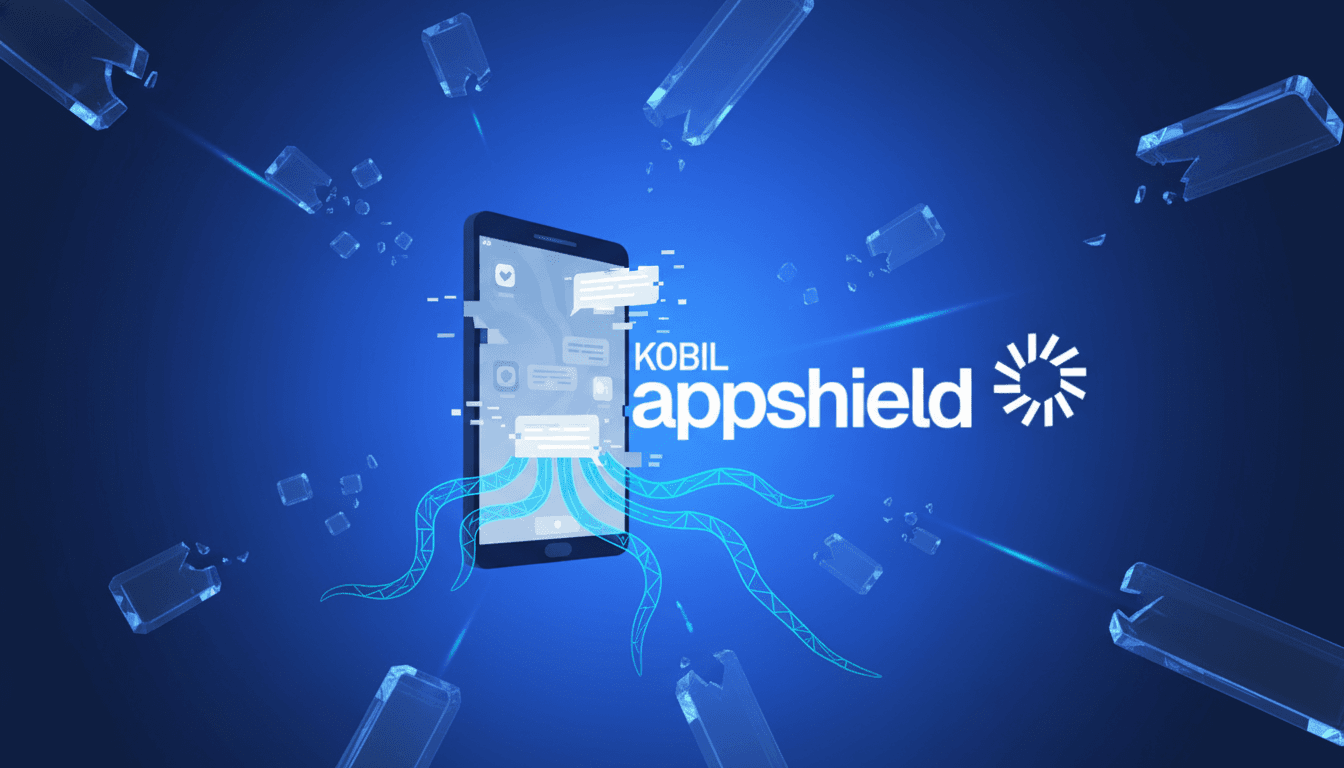ChatGPT Launched 2 Years Ago. Phishing Attacks Increased 4,151%. Your Mobile App Is The Primary Target.
Since November 2022, AI-powered phishing exploded by 4,151% and mobile apps became the #1 attack vector. Here's how attackers weaponized ChatGPT against your app and what you can do in 60 seconds.
November 10, 2025

November 30, 2022: OpenAI launched ChatGPT.
December 2022: Phishing attacks started their exponential climb.
November 2025: We're living in a 4,151% increase nightmare.
And your mobile app just became the easiest way in.
The Number That Should Terrify Every Developer
4,151%
That's not a typo. Since ChatGPT's launch in late 2022, phishing attacks have increased by four thousand, one hundred, and fifty-one percent.
Not 41%. Not 415%.
4,151%.
And if you think this is just about email, you're dangerously wrong.
Mobile apps are now the primary target because they're where users trust the most and suspect the least.
What Changed When AI Learned to Phish
Before ChatGPT, phishing attacks had obvious tells:
Broken English and grammar mistakes
Generic "Dear Customer" greetings
Suspicious sender addresses
Poorly designed fake websites
Spotting them was annoying but doable.
Then AI arrived.
Now attackers can:
Generate Perfect, Personalized Messages
ChatGPT analyzed millions of legitimate business emails. It learned how your CEO writes. How your finance team communicates. What language developers use.
One security researcher tested WormGPT (a criminal version of ChatGPT with zero safety restrictions). Their verdict?
"Remarkably persuasive and strategically cunning."
Create Deepfake Voice and Video
In 2024, a multinational company lost $25 million to a deepfake scam.
An employee joined a video conference call with their CFO and other senior staff. Everyone looked and sounded real. The CFO authorized a $25 million payment.
Every person on that call was AI-generated. None of them were real.
Voice phishing (vishing) attacks surged 442% between the first and second halves of 2024 alone.
Bypass Traditional Email Filters
AI-generated phishing emails achieve:
78% open rates (vs. 20-30% for legitimate marketing emails)
21-second average time to click (victims act before they think)
40% faster creation time than manual phishing
And here's the scariest part: In March 2025, AI surpassed elite human hackers for the first time.
Hoxhunt's research showed AI phishing agents now outperform professional security red teams. The machines got better at tricking humans than humans did.
Why Mobile Apps Became The Prime Target
Email phishing is getting blocked. Corporate networks have defenses. Desktop security is mature.
But mobile? Mobile is the new Wild West.
The Trust Gap
Users trust their phones more than any other device:
Banking apps handle millions in transactions
Health apps store medical records
Dating apps contain intimate conversations
Workplace apps access company secrets
One compromised mobile app = complete access to everything.
The Security Gap
Approximately 75% of mobile apps suffer from security vulnerabilities, and four out of five mobile applications have at least one vulnerability.
Attackers know this. They also know:
Most apps have zero runtime protection
Developers prioritize features over security
"It's just an MVP" becomes "it's now handling 100K users"
Mobile-Specific Attack Vectors
AI-powered phishing on mobile looks different:
Smishing (SMS Phishing) "Your package couldn't be delivered. Click here: [fake tracking link]" AI generates thousands of variants. One gets through.
In-App Phishing Malicious apps that look identical to legitimate ones. AI creates pixel-perfect clones in hours.
QR Code Attacks
Restaurant menu? Parking payment? Conference registration? AI generates malicious QR codes that redirect to credential-harvesting sites.
Social Media Lures Fake job offers on LinkedIn. "Verify your account" messages on Instagram. AI personalizes based on your profile, posts, and connections.
The Mobile Phishing Kill Chain (AI-Accelerated)
Here's how an AI-powered mobile phishing attack works in 2025:
Step 1: Reconnaissance (AI-Automated)
Scrape LinkedIn, GitHub, company websites
Analyze your app's public reviews
Identify employees, roles, communication patterns
Build target profiles
Time: 60 seconds (vs. hours manually)
Step 2: Payload Creation (AI-Generated)
Generate personalized phishing message
Create fake login page (pixel-perfect copy)
Craft urgency: "Your account will be locked in 24 hours"
Optimize message based on target's writing style
Time: 30 seconds (vs. hours manually)
Step 3: Delivery (Multi-Channel)
SMS with malicious link
Email spoofing your company domain
Fake app update notification
Social media message from "IT support"
Step 4: Credential Harvest User clicks. Enters login credentials on fake page. Attackers gain:
Username and password
Session tokens
MFA codes (if timed correctly)
Access to your actual app
Step 5: Lateral Movement Once inside your app:
Extract user data from local storage
Intercept API calls
Access backend with stolen credentials
Pivot to other systems
Total time from target selection to data exfiltration: Under 10 minutes.
The $4.88 Million Question
The average phishing-related breach now costs organizations $4.88 million.
But that's just the measurable cost. The real damage includes:
Reputation Destruction "Company X app leaked my data" trends on Twitter. Users delete en masse. Recovery takes years.
Regulatory Penalties
GDPR fines: Up to 4% of global revenue CCPA violations: $7,500 per record HIPAA breaches: $50,000+ per violation
Customer Lifetime Value Loss According to recent research, 70% of CISOs believe their organizations are likely to face a major cyberattack in the next 12 months.
When your app gets breached, customers don't come back. Ever.
Opportunity Cost While you're firefighting a breach, your competitors are shipping features and stealing your users.
"But We Have Email Filters and MFA"
Great. AI bypasses both.
Email Filters While advanced filters catch most generic AI spam, sophisticated AI attacks are adapting. Research shows that while email filters blocked many low-effort AI-generated attacks, the velocity of improvement is concerning.
Attackers learn from every blocked attempt. Their AI gets smarter. Your filters stay static.
Multi-Factor Authentication (MFA) Sophisticated phishing kits like EvilProxy can intercept and replay MFA codes in real-time.
User enters credentials + MFA code on fake page → Attacker uses them immediately on real site → Session hijacked.
Your MFA didn't fail. It was bypassed.
What Your Mobile App Needs (That It Probably Doesn't Have)
If an attacker can:
Install your app on a rooted/jailbroken device → Game over
Attach a debugger to see memory contents → Game over
Use Frida to hook into functions → Game over
Screenshot sensitive screens for OCR scraping → Game over
Intercept API calls despite HTTPS → Game over
One "yes" is enough.
Over 75% of mobile applications are reported to neglect simple security measures, such as password protection for storing data.
Your app likely has several "yes" answers.
The 60-Second Defense Against AI-Powered Phishing
You can't out-teach AI phishing. Users will click. Training helps, but human error is inevitable.
What you can do: Make your app un-exploitable even when users get phished.
Here's how Security Box protects against the AI phishing kill chain:
When attackers steal credentials:
Device binding ensures stolen credentials only work on the original device
App integrity checks detect if the app was tampered with
Session tokens encrypted in memory (can't be scraped)
When attackers try to analyze your app:
Root/jailbreak detection blocks compromised devices
Anti-debugging prevents memory inspection
Frida detection stops function hooking
Code obfuscation makes reverse engineering exponentially harder
When attackers intercept communications:
SSL pinning prevents man-in-the-middle attacks
Anti-tampering detects modified network configurations
Encrypted local storage protects cached data
When attackers automate attacks:
Emulator detection blocks bot farms
Anti-automation tools prevent scripted attacks
Screen capture protection stops OCR credential harvesting
All of this. In 60 seconds. Zero code changes.
The AI Arms Race You Can't Ignore
March 2025: AI phishing agents surpassed human red teams.
By 2026: Every phishing attack will be AI-optimized.
By 2027: Cybercrime costs are expected to exceed $23 trillion.
The attackers have AI. Your users have AI writing their emails.
Does your mobile app have AI-grade protection?
The Uncomfortable Truth
Your app is probably vulnerable right now.
Not because you're a bad developer. Because:
You prioritized shipping over security (understandable)
You assumed "HTTPS is enough" (it's not)
You thought "we're too small to be targeted" (bots don't discriminate)
You planned to "add security later" (later is now)
AI-powered phishing doesn't care about your roadmap.
What To Do Right Now
Step 1: Know Your Risk
Run a free security scan. Find out if your app can survive an AI-powered phishing victim who enters their credentials on a fake page.
Can attackers:
Use those credentials on a rooted device?
Debug your app to find session tokens?
Screenshot sensitive data?
Intercept API calls?
Step 2: Close The Gaps
Upload your app to Security Box. Wait 60 seconds. Get back a hardened version that protects against:
Credential theft exploitation
Device compromise
Memory scraping
API interception
Automated attacks
Step 3: Ship With Confidence
Your users will get phished. That's inevitable in 2025.
But with proper runtime protection, phished credentials become useless to attackers.
They can't run your app on compromised devices. They can't debug it. They can't hook into it. They can't exploit it.
Phishing happens. Exploitation doesn't.
The 4,151% Problem Needs a 60-Second Solution
Since ChatGPT launched, phishing became industrialized.
AI writes perfect phishing emails
Deepfakes bypass voice verification
Fake apps clone real ones pixel-perfect
Mobile became the weakest link
You can't stop users from clicking. But you can stop attackers from winning after they click.
See What AI-Powered Attackers See
Your first scan is free. No credit card. No commitment.
Just the truth about whether your app can survive the 4,151% surge.




